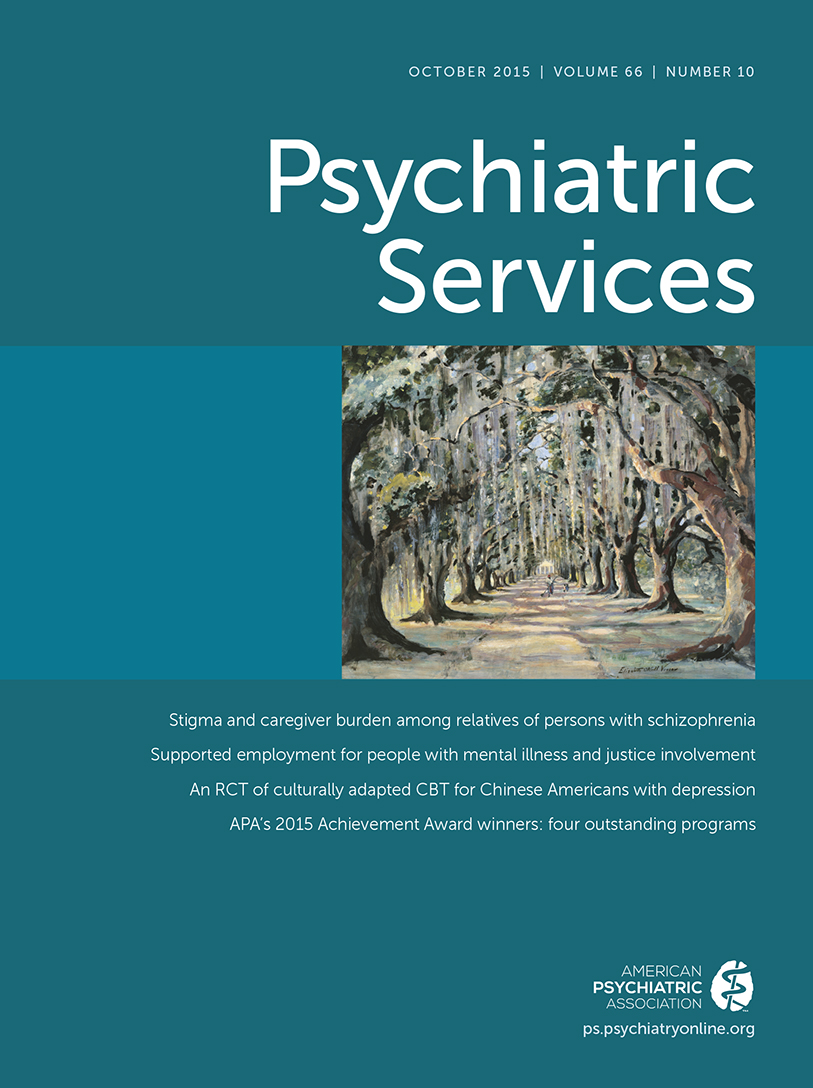This Month’s Highlights
Stigma and Caregiver Burden
Families often play an important role in recovery, but stigma can contribute to caregiver burden. This phenomenon has been described as “stigma by association” or “associated stigma.” As part of a larger Swedish study, Katarina Allerby, R.N., and colleagues mailed questionnaires to 65 family members whose relatives were receiving outpatient treatment for schizophrenia. The instruments measured the effects of stigma on their lives and on the lives of their ill relatives and assessed whether stigma increased caregiver burden. More than half (53%) stated that their ill relative had been stigmatized, but less than a fifth (18%) reported that they themselves had been stigmatized. However, nearly a quarter (23%) said that they avoided situations that might elicit stigma. When the analyses adjusted for patient age and level of functioning, stigma was found to be associated with poorer quality of life of family members (page Original article: 1020). In a Taking Issue commentary, Barbara Ricci, B.A., and Lisa Dixon, M.D., M.P.H., describe their work with the National Alliance on Mental Illness–NYC Metro, where family members frequently report stress and worry about being judged by others and their tendency to withdraw from social situations. The authors wonder whether the culture in Sweden and the services provided may help minimize stigma, and they describe NAMI’s efforts to do so, including Family-to-Family, Stigmafree, and #IWillListen (page Original article: 1009).
Supported Employment and Justice Involvement
A history of arrest and incarceration can create a barrier to workforce entry. Although the Individual Placement and Support (IPS) model of supported employment is known to increase employment rates among persons with serious mental illness, little is known about outcomes for individuals with a history of justice involvement. Gary R. Bond, Ph.D., and colleagues conducted a randomized controlled trial that examined competitive employment outcomes for 85 participants with severe mental illness and justice involvement who were assigned to IPS or to a comparison group that offered a job club approach with peer support. At one-year follow-up, a greater proportion of IPS participants had obtained competitive employment (31% versus 7%). However, the groups did not differ significantly in rates of justice involvement in the one-year follow-up period—either arrests (24% versus 19%) or incarceration (2% for both groups). The authors conclude that augmentations of the IPS model may be needed for this group and that, given the prevalence of justice involvement among people with serious mental illness, IPS employment specialists should increase their competence in working with justice-involved individuals (page Original article: 1027).
Culturally Adapted CBT
Asian Americans are proportionately the fastest growing racial-ethnic group in the United States, and their numbers are projected to quadruple by 2050, from a current total of over 17 million. Mood disorders are the most prevalent psychiatric problem among Chinese Americans. However, stigma concerns may lead to long delays in treatment and severe impairment. Wei-Chin Hwang, Ph.D., and colleagues conducted an RCT to evaluate the effectiveness of cognitive-behavioral therapy (CBT) and culturally adapted CBT (CA-CBT) in the treatment of Chinese-American adults with depression. The 50 patients who entered the study had very severe depression. Dropout rates among CA-CBT were notably low, suggesting that cultural adaptations may blunt traditional misgiving about seeking psychiatric treatment. Although patients in both groups experienced significant decreases in depressive symptoms, most did not reach remission. The authors concluded that these short-term treatments were not sufficient to address such severe depression and that more intensive and longer treatments may be needed (page Original article: 1035).
Briefly Noted
| • | Computational linguistics may one day provide an approach to suicide prevention. Using linguistic detection methods, researchers found that clinicians began to use “distancing language” in their notes on outpatient sessions in the year before a patient died by suicide (page Original article: 1051). | ||||
| • | In a national poll, 78% of respondents supported mandatory coverage of mental health care—on par with support of dental coverage but behind support for other medical services, such as diabetes screening and colonoscopies, suggesting that more work is needed to achieve true parity (page Original article: 1101). | ||||
| • | Do accommodations required for people with severe psychiatric disorders under the Americans with Disabilities Act apply when police are dealing with an individual in crisis? The Law & Psychiatry column describes a recent Supreme Court case examining that question (page Original article: 1012). | ||||
| • | By rooting themselves in established local structures, two mental health programs in low-income rural areas of West Africa are helping to integrate previously marginalized members of the community (page Original article: 1015). | ||||
| • | Four exemplary programs are recipients of the 2015 APA Achievement Awards, presented at the Institute on Psychiatric Services in New York City (page Original article: 1123). | ||||



